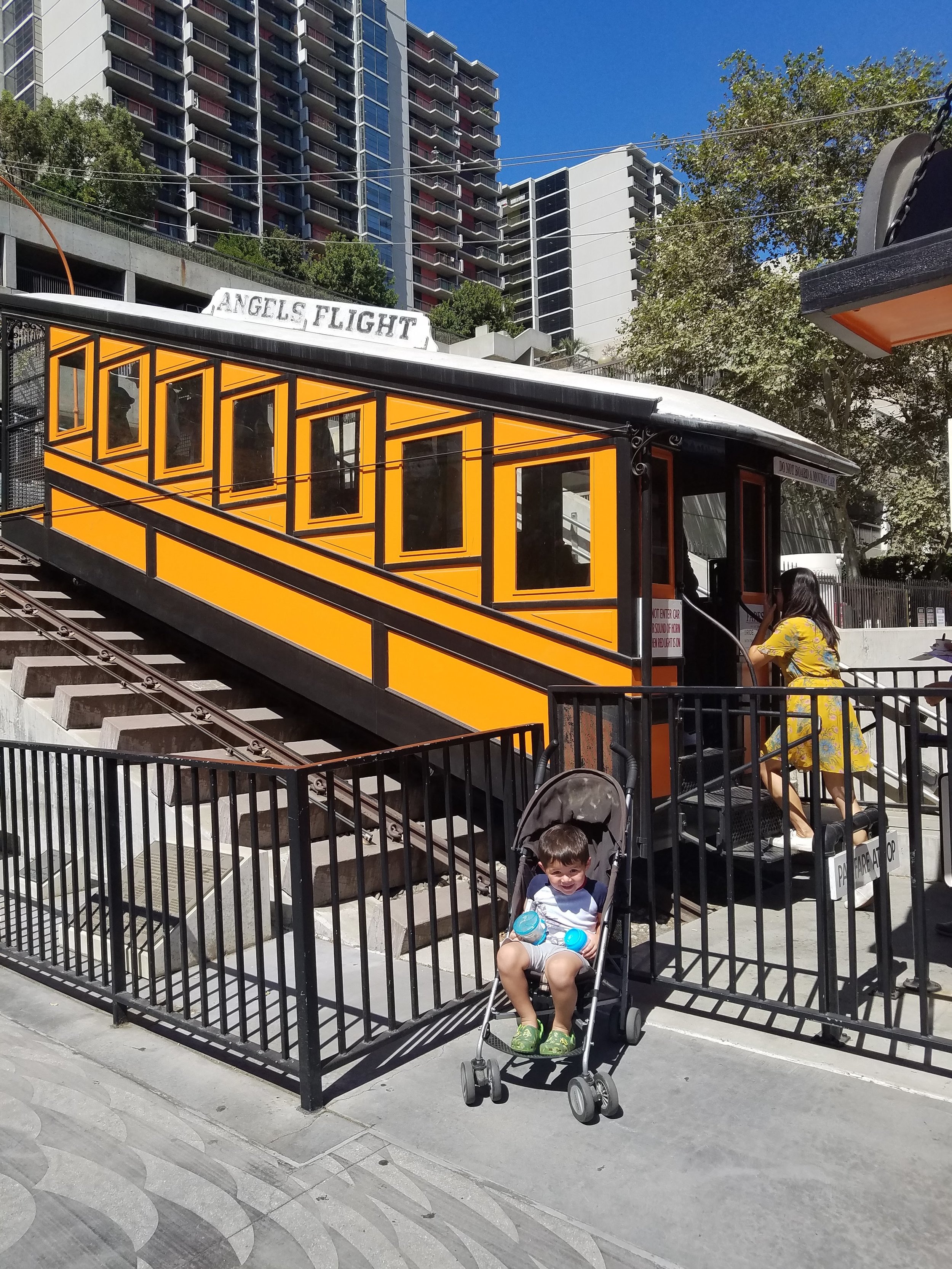Los Angeles is a city that holds claim too far too many “used tos”. It used to have the finest public transportation system in the world. It used to be an agricultural center responsible for the nation’s fresh produce. It used to be a place where middle and working class people could afford a home. In service to that population, it used to be a place where funiculars like Angel’s Flight dotted the landscape. However, in the interest of misguided progress and greed disguised as urban development, the city sold its electric rail system, plowed under its local farms, and ripped down its affordable housing. So many of its used tos are gone, save for one. Connecting Hill and Olive Streets in downtown Los Angeles, Angel’s Flight, the world’s smallest railway continues to serve passengers as it did when it opened at the turn of the century.
Angel’s Flight was constructed to solve a very real problem, not just to inject a bit of colorful novelty into the urban landscape. In 1901, the business district of Los Angeles ran along Hill Street. The wealthy lived nearby in Victorian mansions along the top of Bunker Hill. Despite their close proximity, a hill with a thirty-three degree incline divided the two districts. Considering that the early 1900’s were not an era of flip-flops ands breathable cotton, a waltz from the business district to the top of Bunker Hills would have left Los Angelinos reduced to a sweaty mess of wool. And so, Colonel J. W. Eddy’s approached the city council with a plan to help connect the city. With that, the mechanical wonder known as Angel’s Flight became the solution that people needed.
As the city grew and outlying regions were developed into new neighborhoods, the once tony enclave of Bunker Hill lost its cachet as the wealthy moved far from downtown. The Victorian mansions of Bunker Hill were subdivided into apartments and boarding homes for the city’s working poor and were perceived as a blight. Finding fair and equitable solutions for people from low income backgrounds has never been a strength of the city council. Armed with the power of the Federal Housing Act of 1949, the city’s leadership razed the neighborhood, replaced affordable housing with high rises, and displaced tens of thousands of people for points elsewhere. More fortunate than its neighbors, Angel’s Flight narrowly missed their fate and was put into storage for almost a quarter of a century before being reopened in the 1990’s. Under the watchful care of preservationists, Angel’s Flight continues its mission well into the twenty-first century.
There is something so compelling about watching the little funicular work. Maybe it’s the way the vermillion cars and gates stand in open defiance to the chrome and glass buildings at the top of Bunker Hill. Maybe it’s because the craftsmanship of the people who constructed it over a hundred years ago is reflected stained wood and polished brass. Maybe it’s the way the riders all smile and talk with each other as the little car climbs up the hill, a simple kindness that is rarely present in Los Angeles. Maybe it’s because Angel’s Flight is an embodiment of the goodness and persistence of the people who have fought for its preservation the face of tone deaf leadership. Its continued existence says something about the soul of Los Angeles. There is still some good here, hidden within the unforgiving concrete landscape.
Thanks to Los Angeles Conservancy and Nathan Masters over at KCET for background information used in writing this entry.
This post is based on a visit to Angel’s Flight on September 15, 2018
350 S Grand Ave.
Los Angeles, CA 90071
213 626-1901
Interested in seeing some more of Los Angeles’ history? Take a look at the Hollywood Forever Cemetery and The Bob Baker Marionette Theater.




